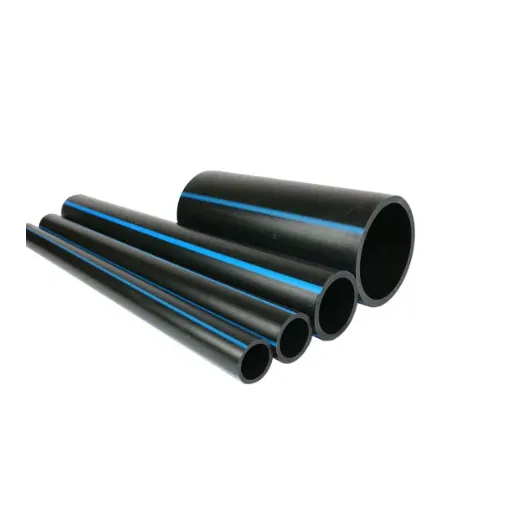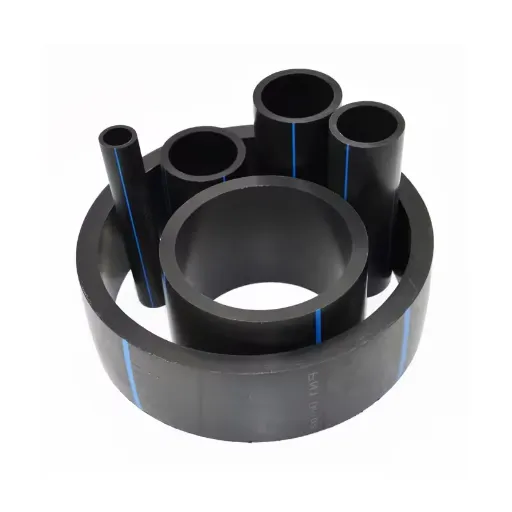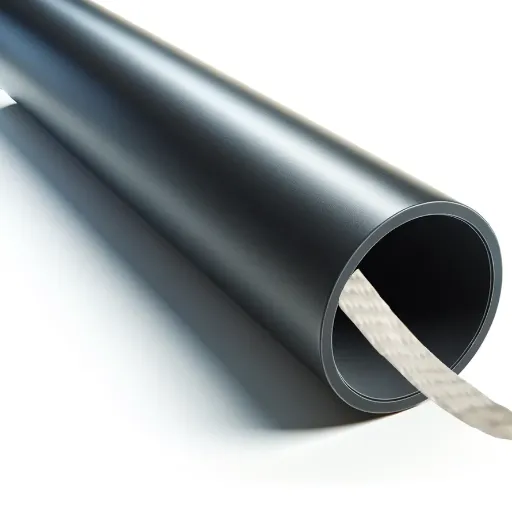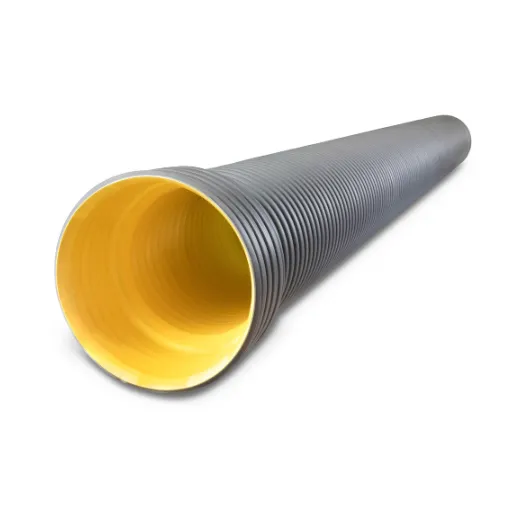Acknowledged for being durable, flexible, and cheap to install, HDPE pipes are found to be critical in many different applications across multiple industries. It is important for the buyer to know what goes into determining the price of the matter with 4-inch HDPE pipes and the various applications in order to make the right choice. This article describes the main cost factors like material standards, manufacturing processes, and demand-side factors while getting into the real-world usage of 4-inch HDPE pipes—water supply systems, industrial pipelines, and geotechnical engineering being among them. Whatever view one takes-project manager, contractor, or industry professional-this guide gives you the due insight to judge the price and value for 4-inch HDPE pipes for your particular needs.
Factors Influencing HDPE Pipe Pricing
1
Material Quality and Standards
The quality of HDPE material is the major criterion when pricing 4-inch HDPE pipes. Pipes made from the best-grade HDPE resin adhering to some accepted international standards like ASTM F714 or ISO 4427 are normally issued at a higher price. It largely depends on the performance characteristics offered by these materials, such as high tensile strength, better durability, and long-term resistance to environmental stress cracking. On the other hand, pipes made using inferior quality or recycled materials could be priced less but may jeopardize the reliability and life of the pipes.
Another important factor is the HDPE material classification by density and pressure. For instance, the so-called PE4710-grade material, which is being typically used in high-performance applications, offers more durability and efficiency and therefore, might cost more. One may consider this grade of material to assure excellent resistance to chemical attack and abrasion in the presence of ultraviolet rays in a tough environment. Pipes considered under these material classes are generally of SDR types (which stands for Standard Dimension Ratio) wherein the wall thickness is optimized concerning the diameter of the pipe, and subsequently, this determines price.
Finally, compliance with nationally or internationally accepted standards ensures that quality remains consistent once set, thus affecting the price. Certified pipes are usually priced higher than non-certified ones, giving assurance to end-users that the pipes will be reliable for a long time and will cost them less in maintenance throughout their operating life. Balancing the quality of materials, standards, and application requirements crafts the price of 4-inch HDPE Pipes.
2
Manufacturing Processes and Techniques
Some accurate and precise methods are followed in the manufacturing of 4-inch HDPE pipes to have durability, performance, and industry standards. Extrusion is the primary method where HDPE granules are melted and pushed from a die to form the pipe. This is how one maintains uniform wall thickness and very smooth pipe surfaces since it is essential for hydraulic efficiency. Typically, the extrusion process is followed by cooling, where the pipe passes through calibrated water baths to solidify and stabilize dimensions.
Continuous quality control is an important step in manufacturing. During the extrusion process, various advanced monitoring installations check parameters such as wall thickness, diameter, and ovality. Non-destructive testing methods, such as ultrasonics or hydrostatic pressure testing, assist in verifying the pipe’s structural integrity to preclude the existence of hidden faults. These tests thus form an integral part of the compliance with regulations, such as ISO, ASTM, or WRAS certification.
When multi-layered HDPE pipes are produced, they can be co-extruded. These pipes usually incorporate use-and-temperature resistant coatings or barrier layers to contribute to their longevity and resistance to the environment. Finally, post-production works such as cutting, labeling, and bundling are done to prepare the pipes for transport and installation without compromising their quality. Thus, at each manufacturing stage, execution with great care results in HDPE being well capable of withstanding any application for the rest of its lifetime.
3
Market Demand and Supply Dynamics
The HDPE pipe market has been driven by the conjoint influences of infrastructural growth, urbanization, and the growing preference for sustainable materials in construction and water management systems. According to industry sources, agriculture, gas distribution, and potable water supply are vital contributors to demand. Emphasis on improving drainage and irrigation leads to the increased adoption of HDPE pipes, especially in developing countries, where they are predominant due to their lightweight, abrasion resistance, and corrosion resistance.
More supply-side dynamics are determined by factors like raw material availability, manufacturing technology changes, or environmental standards legislation. As polyethylene, which is the raw material composition of HDPE pipe, is petrochemical in its source, any fluctuations in the price of crude oil immediately get reflected on the production cost as well as supply stability. This, however, has led to manufacturers looking into sustainable methods of manufacture and recycling to be able to comply with the different environmental policies while supplying the markets.
In addition, under the influence of both infrastructure projects across the region and policies favoring clean water and waste management, the balance between demand and supply continues to be impacted. As green infrastructure gains greater significance worldwide, the HDPE pipe market shall have continual growth supported by innovations leading to better performance and sustainability alignment. This alignment shall create a strongly adaptable market trajectory for the next few years.
Typical Price Ranges for 4 Inch HDPE Pipe
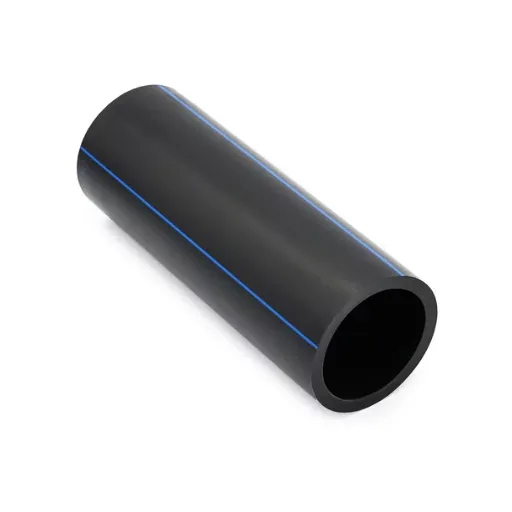
Current Market Rates
Average Price Range
$1.50 – $4.00
per linear foot
Various factors tend to affect the price of 4-inch HDPE pipes, including the price of raw materials, the manufacturing process, demand in the marketplace, and availability by region. On average, standard 4-inch HDPE pipe costs range between $1.50 and $4.00 per linear foot. But these prices vary from HDPE pipe to HDPE pipe: the potable water grades are not the same as the conduit grades. Some of the highest-density specifications are designed for industrial applications. Also, when purchasing in bulk, price discounts can be applied, which often helps to reduce per-unit prices.
In view of recent trends, people increasingly prefer taking HDPE pipes because of characteristics of long life, corrosion resistance, low maintenance, etc. This demand phenomenon has affected pricing, where some manufacturers are presently seeking a price increase reflecting the rising cost of polyethylene resin and the increasing transportation costs. The distributors may also interfere in price variations for the different regions, as logistics and supply constraints influence price formation. Therefore, clients must analyze a few suppliers and compare regional market rates to procure the best terms fitting to their project budgets.
Furthermore, in international markets, currency fluctuation and trading policies may influence pricing in the HDPE pipe market. For examples, import duties or economic conditions may be levied on raw materials or transportation, resulting in price surges or price cuts for short-term periods. It is always recommended that along with local rates, one tracks the world trend for commodities to make any informed buying decisions. Up-to-date market data combined with dependable supplier catalogs ensures the buyer of competitive prices, rather than relying heavily on generalized market indices or speculative price estimations.
Comparative Analysis with Alternative Materials
Several factors are to be considered for an alternate material to be selected optimally for specific applications. Among others are the mechanical properties, including tensile strength, elasticity, and fatigue resistance. To cite one example, composites with their high strength-to-weight ratios surpass conventional metals such as aluminum or steel; thus, they really serve well in aerospace and automotive areas. Metals finish off with better resistance and thermal conductivity, which might become vital for some engineering applications.
Yet another must-consider factor is price-effectiveness. Materials with cutting-edge technology, say carbon fiber composites, may provide a high performance benefit, but they stand between tens of times and hundreds of times higher in production cost compared with conventional materials. Their use is, therefore, limited. Materials such as HDPE serve as a cheaper alternative across numerous applications where extreme durability is not a must, like packaging or fluid storage systems.
Also, environmental matters hold large consideration in selecting materials. Pronounced forces are being cast on sustainability from all directions, and hence the recyclable or biodegradable ones are garnering increasing attention. Bioplastics, for instance, from renewable resources, are thus more and more used to substitute petroleum-based plastics, which means fewer carbon emissions and better environmental compatibility.
Regional Price Variations
Regional price variations in the material sciences occur due to the interactions of many complex factors, such as availability of raw material, local labor costs, energy prices, and the logistics involved. Creativity gears ahead with regional affiliates. A region blessed with an abundance of natural resources may experience cheaper prices for materials originating from those resources since there are less costs of transportation and extraction. But, on the contrary, in those regions where natural resources are in scarcity, the prices are most of the time exorbitantly high, given that such resources are forced to be imported, carrying with them all the additional disadvantages associated with their logistics.
Economic policies, tariff impositions, and trade restrictions, among other such things, are also significant factors for price disparity. High import duties on materials or equipment almost always mean significantly greater regional prices. And then also, energy costs affect production costs, as manufacturing processes for most industrial materials are quite energy-intensive. Areas that enjoy energy efficiency or just have access to cheap energy have comparatively low manufacturing costs, so the market prices go down.
Keep in mind that these regional differences are dynamic and vary with global supply chains, geopolitical events, and technology. Further, by placing real-time data sources with advanced analytics, stakeholders in material-dependent industries increase their insight into these variations, thus aiding strategic decision-making and cost optimization.
Applications of 4 Inch HDPE Pipes
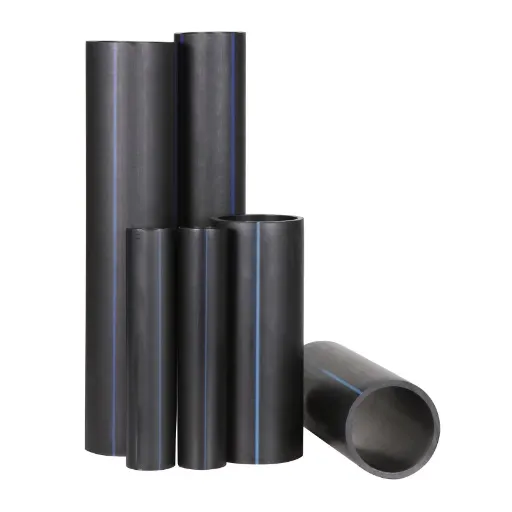
Construction and Infrastructure
HDPE 4-inch pipes stand tall in the horizon of versatile sectors that fall into the general pizazz of construction and infrastructure with consideration bestowed on such factors as durability, flexibility, and weathering. The main application of 4-inch HDPE pipes under this heading is:
-
💧 Water Supply Systems
Water supply systems mainly rely on HDPE pipes for potable water, so they are corrosion-resistant and cost-efficient. High pressure resistance is an additional feature of these pipes; hence, they serve well in all water distribution networks, whether urban or rural. Under standard operating parameters, studies evidenced an average life span exceeding 50 years for HDPE water systems, drastically limiting maintenance costs.
-
🚰 Sewage and Drainage Systems
Such properties of HDPE pipes that are chemical reactions and with smooth inner linings enable wastewater and storm-water drainage functions. While creating a better environment for sanitation infrastructure, these pipes reduce blockage occurrences and leakage threats.
-
⚡ Underground Electrical Conduits
HDPE pipes are extensively used as conduits for housing electrical and telecommunication cables. They serve as excellent insulation and offer protection from moisture, chemical attack, or mechanical damages, thereby ensuring safety in installations of a critical nature.
-
🌾 Irrigation Systems-Agriculture
HDPE pipes are very much included in the agricultural sector, especially in irrigation infrastructure. Because HDPE pipes are lightweight and easy to install, they are highly preferred for moving water through fields, thus increasing crop production with less water wastage.
-
🔥 Natural Gas Distribution
Their strength, flexibility, and resistance to various environmental hazards are just some reasons why 4-inch HDPE pipes are used in low-pressure natural gas distribution systems. Also, the fusion-welded joints make the system safer and completely leak-free, thereby making it a preferred choice for energy infrastructure.
These multitudinous applications indeed speak for the key role that 4-inch HDPE pipes play in modern construction and infrastructure systems, for efficiency, and for sustainability.
Agricultural Irrigation Systems
4-inch HDPE pipes hold crucial significance in the operability of agricultural irrigation systems set in modern days, having attributes of strength, light weight, and corrosion resistance. These pipes permit efficient conveyance of water so that crops receive nourishment alongside minimal water loss during the process. Their flexibility affords ease of installation over diverse terrains, thus becoming pivotal to precision agriculture. Five real-world uses of 4-inch HDPE pipes in agricultural irrigation systems are enumerated below:
- 1
Drip Irrigation
Generally, the HDPE pipes are used in drip irrigation systems whereby water is supplied to the root zone of crops through emitters or tubing. Agricultural studies show that this reduces water wastage and hence increases water use efficiency by almost 90%.
- 2
Sprinkler Systems
These pipes are used in sprinkler systems, where they transport water under controlled pressures to overhead sprinklers. HDPE pipes withstand pressures as high as 200 psi to provide uniform water distribution over large fields.
- 3
Pivot Irrigation
In pivot irrigation systems, the pipes serve as the conduits through which water is transmitted to the pivot sprinklers. Their corrosion resistance is a significant attribute for sensible use in areas with highly saline water or soils.
- 4
Surface Irrigation
Depending on the methods of surface irrigation involved, HDPE pipes may be required to convey water from the source to the furrows or basins. Being light in weight, these pipes can be relocated very easily, and somewhat adaptable for temporary irrigation work as well.
- 5
Water Storage Systems
Generally, HDPE pipes are used to connect pumps to water reservoirs or storage tanks on farmland. Due to their ability to withstand varying pressures and temperatures, they can be used for pumping water and its subsequent discharge from distant storage facilities to the working field.
These applications explain the importance of HDPE pipe usages in irrigation methods, sustainability of agriculture, and conservation of water resources needed in agricultural activities.
Water Management and Supply
Efficient water management and supply remain the very basis of sustainable agriculture, especially in places confronted with water scarcity or irregular rains. The role of HDPE pipes is to allow the perfect transfer of water to agricultural activities and ensure that water is properly stored. The following are some more aspects of water management and supply to which HDPE pipes contribute:
⏰ Durability and Longevity
HDPE pipes have a life span of 50 years under the ordinary environment. This provides for limited maintenance and ensures long-term reliability of water resources management.
💪 Pressure Handling Capacity
In general, the HDPE pipe can handle pressure ranging from 4 kg/cm² to 25 kg/cm² and thus can be used for low-pressure irrigation as well as pressure pumping applications, giving the design flexibility for water supply systems.
🔒 Leakproof Joints
The fusion welding technique used in HDPE pipes creates a seamless and 100 percent leak-proof joint. If leakages through joints are controlled, water loss is reduced to the bare minimum; hence, non-thief water transportation will be maximum, favoring sustainability.
🧪 Chemical and Corrosion Resistance
HDPE pipes resist a wide class of chemicals and thus maintain the integrity of the piping system even while treating saline or polluted water. They, therefore, find their application in diversified water qualities as required by farming systems.
🪶 Lightweight and Easy Installation
These HDPE pipes are considerably lighter than steel and concrete pipes because steel and concrete pipes, by virtue of weight, would have posed a huge challenge in transportation and installation. Flexibility, therefore, enables facile laying of these pipes in a terrain that is quite complex, usually hilly, or with even farmland.
These features respectively emphasize the pivotal role HDPE piping plays in the world not only for improving water management systems but also for practicing sustainable agriculture.
Benefits of Using HDPE Pipes
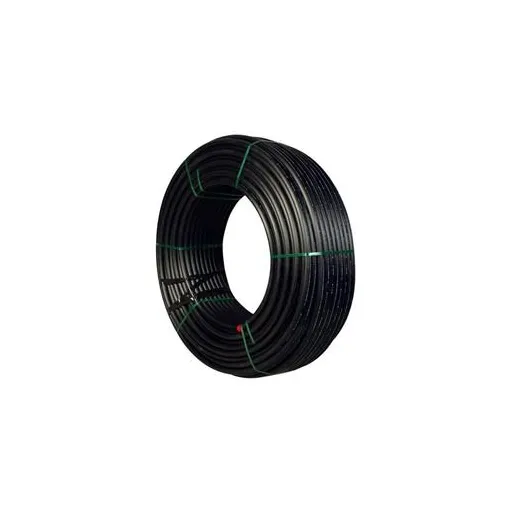
Durability and Longevity
Key Durability Features
- Corrosion Resistance
HDPE pipes are highly impervious to corrosion by chemical attack and other causes of corrosion by varied environmental agencies. Consequently, such corrosion agents cause a more prolonged deterioration curve under the attack of corrosion with metallic pipes. - Impact Resistance
HDPE pipe is a flexible pipe exhibiting good impact resistance; shocks are taken-up never to have cracks or breakages even under heavy load or severe conditions. - Abrasion Resistance
The material of construction for HDPE pipes is highly resistant to abrasive wear from the abrasive flow of materials; therefore, such pipes are well considered for the transportation of slurry and somewhat abrasive materials. - UV Resistance
HDPE pipes resist degradation due to long exposure to sunlight, justifying its use for installation in outdoor areas. - Low Maintenance
In any case, they will not be damaged in their installation if at all; this further encourages low maintenance. Low maintenance costs eventually allow an extension of the life of more than 50 years.
Resistance to Corrosion and Chemicals
The highly resilient qualities of HDPE pipes make them resistant to corrosion and chemical exposure, hence posing an excellent option for various industrial and commercial applications. Their resistance offers guaranteed long-term reliability even in harsher environments in which other materials might degrade or fail. Corrosion and chemical resistance of HDPE pipes could be summarized as follows:
| Resistance Type | Description |
|---|---|
| Acid Resistance | HDPE pipes can tolerate most acids, including sulfuric acid and hydrochloric acid, without suffering damage or degradation. |
| Alkaline Resistance | HDPE pipes resist alkalis and remain intact in operations where strong bases are present. |
| Saltwater Corrosion Prevention | HDPE pipes do not suffer corrosion effects by saltwater and, hence, are apt for marine and coastal applications. |
| Organic Solvent Resistance | This material protects against damage from organic solvents used in some industrial processes, thus retaining its structural integrity over long periods of time. |
| Electrochemical Corrosion Resistance | HDPE pipes do not get corroded due to electrochemical reactions, unlike metals; this is very advantageous for systems that are buried or submerged in water. |
Such strong resistance against various corrosive substances and chemicals gives HDPE pipes an edge in terms of durability and, therefore, versatility across a wide spectrum of applications.
Cost-Effectiveness over Time
HDPE pipes are usually cheap due to their durability, little maintenance, and longevity. The list below sorts all such factors that contribute to these economic advantages:
Economic Benefits Summary
Long-term savings through reduced maintenance and replacement costs
- Long Life: HDPE pipes usually do reach a life span of more than fifty years under favorable conditions; thus the frequency of replacement is low, along with the cost involved.
- Low Maintenance Costs: HDPE pipes require little to no inspection and maintenance, being resistant to corrosion, scaling, and reaction with chemicals, unlike conventional materials.
- Energy Efficient Production: The production of HDPE pipes consumes comparatively less energy than metal alternatives, adding to their overall lesser cost.
- Lower Installation Costs: HDPE pipes are less heavy and flexible, offering ease in handling and installation, further being cheaper in trenchless applications such as pipe bursting or directional drilling.
- Reduced Pipe Leakage: Since HDPE pipes have leak-free joints, water loss is significantly minimized, alleviating the operational costs of water distribution systems over a period.
Understanding these characteristics explains why HDPE pipes respond to cost-effective criteria from industries and utilities looking for long-term infrastructural investments.
Important Considerations for Purchasing HDPE Pipes
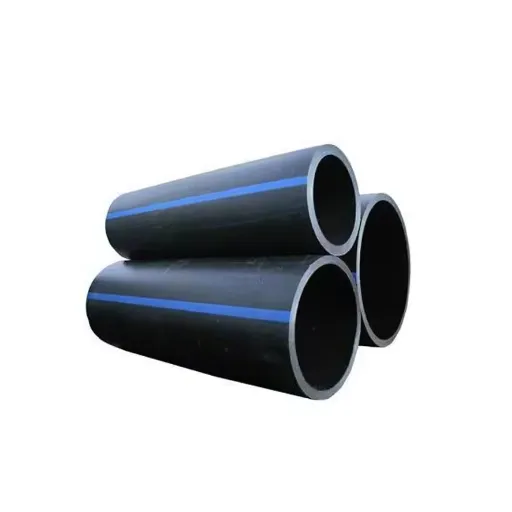
Supplier Reliability and Certifications
Here I look at every aspect of the selection; reliability and certifications are prioritized to ensure the best quality and the long-term performance of the product. Failure to supply consistent materials for durable pipe systems will cause a hampering in my projects. Past client testimonials are used to assess the reputation alongside their experience and ability to deliver their commitments on time. This allows me to form partnerships with suppliers that can be trusted to deliver within technical requirements and timelines.
I look into the certification status that a supplier holds very carefully. It is important to me that HDPE pipes are certified to international as well as regional standards, such as ISO certifications or any other relevant compliance benchmarks that might exist in my region. This stands as testimony to a firm’s commitment to maintaining quality control and assuring customers that their products will withstand strict safety and performance standards. I ensure suppliers can supply documentation showing their compliance against standards for strength, durability, and environmental safety.
Support services are a major consideration as well. Another thing I look for is those suppliers willing to provide technical support, installing instructions, and after-sales service. Getting quick answers to concerns raises smooth workflow and cuts down on wasted time. With a firm commitment to reliability, certifications, and support services, my HDPE pipe investment is going to be one I can trust in for my operations in the long run.
Quality Standards and Compliance
In selecting HDPE pipes, quality standards and compliances offer assurance with regard to performance and longevity. Worldwide accepted standards like ISO 4427 and ASTM D3035 ensure that the pipes satisfy stiff requirements in terms of durability, mechanical strength, and chemical resistance. By meeting these standards, one can rest assured that the materials will uphold through demanding conditions including extreme temperatures, high pressure, and exposure to aggressive chemicals. These standards therefore help in weighing the trustworthiness and safety of a product.
These pipes become more credible if they comply with government and regulatory rules. This is of utmost importance in water distribution, waste management, and industrial conveying, where pipes, being non-compliant, would compromise both the integrity of the operations and public health. Businesses that opt for such certified products not only heel toward meeting the legal requirements but also show a greeter concern for sustainability and quality.
Furthermore, in the maintenance of industry standards, constant innovation and the integration of technology during product development play a pivotal role. For instance, advanced manufacturing processes and testing programs keep checks on material quality and performance. Most producers also have a traceability-system feature that aids in the simple tracking of pipelines when deployed or maintained. This not only gives enhanced value to compliance but also facilitates operations and reduces downtime, leading to greater benefits for everyone involved in the value chain. Hence, companies, by concentrating on quality standards and compliance, can go forward confidently in providing infrastructure solutions capable of withstanding present-day insults and accommodating such challenges in the future.
Long-Term Value and Return on Investment
Investing in quality infrastructure will undoubtedly create great long-term value for money and operations. The higher the standards maintained, and the tighter the compliance, the lesser the need for extraneous repairs, unplanned downtime, and system-failure risks. Hence, in this direct sense, savings and ROI will accrue, thus making the investment worthwhile. Also, a higher level of reliability and efficiency will lead to smooth operations that are less prone to disruption in productivity or profitability.
Looking at the larger picture, it is the constant emphasis on quality and compliance that builds the goodwill of the organization, adding levels of trust among stakeholders: clients, investors, and authorities alike. This goodwill eventually paves the way for increased opportunities for future projects and partnerships, thus burgeoning the returns on investments. Besides, with the advent of technology, advanced sensor systems, and predictive analytics, companies can identify potential points of failure and resolve them ahead of time, thereby reducing maintenance costs and extending infrastructure life.
While there is this attractive temptation of focusing on short-term wins, it is the long-term money-and-operation-oriented approach that will breed sustainable growth. Solutions designed for adaptation and innovation are resilient to ever-evolving challenges, whether it be environmental regulations or the uptake of renewable resources. Therefore, companies can safely position themselves as future-ready resilient enterprises that guarantee the investments made today will pay rich dividends for years to come. By arranging their immediate needs in tandem with foresight and rigorous planning, the overarching dividends of good infrastructure and strategic investment decisions become obvious.
References
-
24 HDPE Pipe Price Per Foot
A detailed document discussing HDPE pipe pricing for various infrastructure projects. -
Section 5011 – Fusible PVC and HDPE Pipe
A technical document from Iowa State University covering unit pricing and specifications for HDPE pipes. -
Large Diameter HDPE Pipe for Highway Drainage
A report from Texas Tech University discussing the advantages and pricing of HDPE pipes for highway drainage.
Frequently Asked Questions (FAQ)
Q: What factors influence the 4-inch HDPE pipe price?
The 4-inch HDPE price depends on several factors, among them the manufacturing process, raw material quality, market demand, and pipe specifications such as pressure rating and SDR (Standard Dimension Ratio). Location and shipping will generally also affect the price.
Q: How does a price of 4 inch HDPE compare with other pipes?
Generally, prices are competitive when compared with those for other materials such as PVC and other plastic pipes. While HDPE has a good reputation in terms of durability and corrosion resistance, ultimately, costs depend on the particular application, pressure rating needed, and prevailing market conditions in one’s location.
Q: What are the technical specifications for a 4 inch HDPE pipe?
The technical specifications of 4-inch HDPE pipes include their diameter, pressure rating, SDR, and material composition (being high density polyethylene). SDR11 and SDR17 are the most common SDR ratings used for these pipes, to determine their strength for irrigation and water supply applications.
Q: Are 4 inch HDPE pipes available in rolls?
Yes, 4 inch HDPE pipes are available in rolls which are quite useful for irrigation and big projects. Having pipe rolls available during installation adds flexibility and minimizes the number of joints, subsequently reducing one of the common leak points.
Q: Is there a MOQ in 4-inch HDPE pipes?
Minimum order quantities (MOQs) for 4-inch HDPE pipes may exist among suppliers, especially those based in China or on Alibaba platform. Different MOQs may exist, so it is usually recommended to check for the particular manufacturer’s MOQs.
Q: What applications can be performed with 4 inch HDPE pipes?
4 inch HDPE pipes are applied for irrigation systems, water supply, municipal drainage, industrial drainage, and its applications need durability and corrosion-proof quality for the transportation of potable water suspensions and other liquids.
Q: How is pressure rating affecting the price of 4 inches of HDPE pipe?
The pressure rating of the 4-inch HDPE pipe strongly affects its price; higher pressure rating pipes, like those rated 10 mpa, are more expensive because of added safety and enhanced performance features required by high-pressure applications.
Q: What should be taken into consideration when choosing a 4 inch HDPE pipe for my project?
Selecting a 4 inch HDPE pipe will vary depending on its specific application (such as irrigation or water supply), pressure rating requirements, and length of pipe needed, as well as whether it will be implemented in trenchless installation. From the supplier, it is good to assess their quality control so as to weigh up the reliability factor.
Q: Are there certifications of 4 inch HDPE pipes?
Yes, many 4 inch HDPE pipes are certified under ISO 4427 and EN 12201, which comply with international quality and safety standards. These certification matters will be important for projects wherein high demand for quality assurance becomes necessary, especially in municipal water supply applications.
Q: What are the advantages of 4 inch HDPE pipes over PVC?
The advantages of 4 inch HDPE pipes over PVC include more flexibility, higher impact resistance, and corrosion resistance. HDPE pipes can also resist very high temperatures, which endanger the application of PVC. Similarly, HDPE pipe is less likely to break under load, hence more suitable for irrigation and water supply systems.



